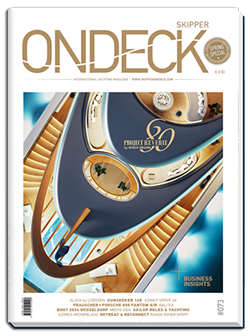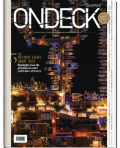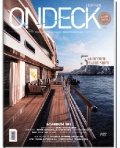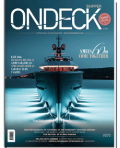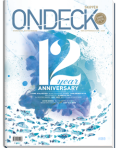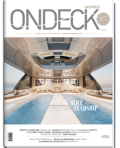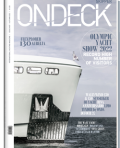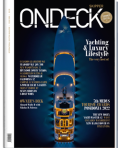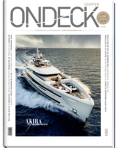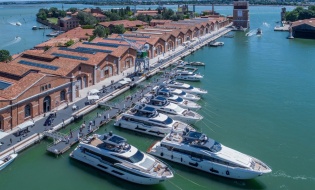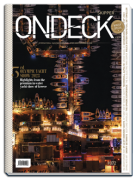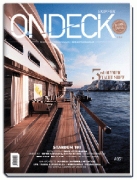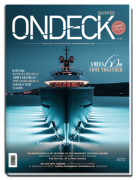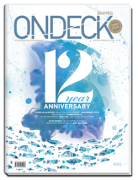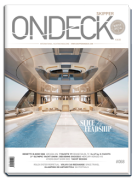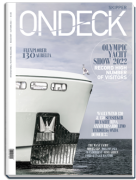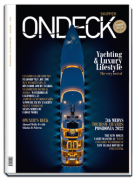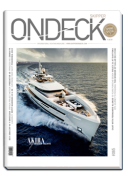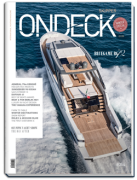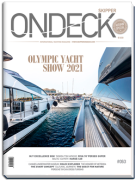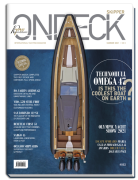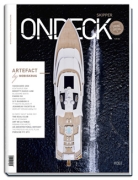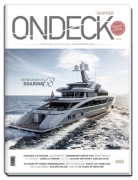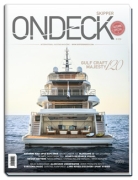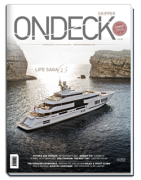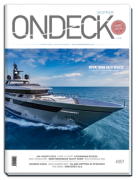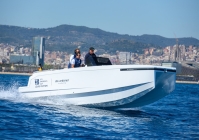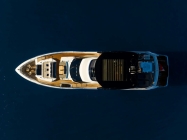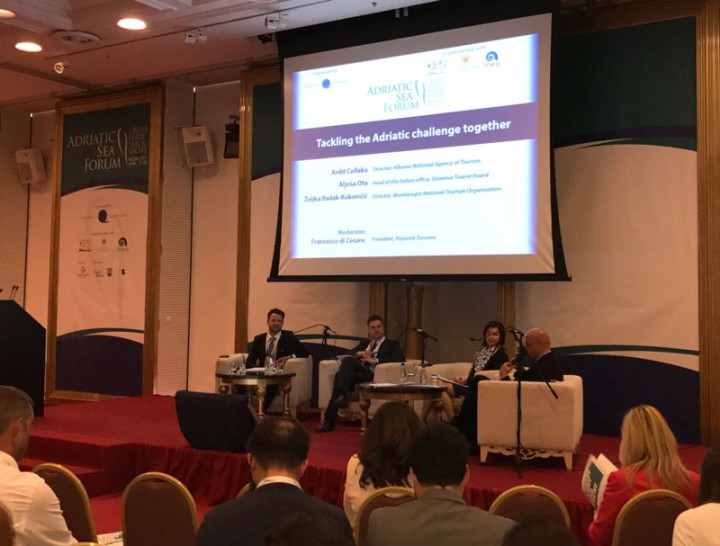
ADRIATIC SEA FORUM: the third edition of Adriatic Sea Forum – cruise, ferry, sail & yacht starts today at Budva. The Forum is an itinerant international event dedicated to the Adriatic maritime tourism sectors.
The event includes a presentation of the latest edition of the Adriatic Sea Tourism Report: in 2017 it is forecast that about 4.73 million cruise passengers (-6.51% on 2016) will be handled by the ports of the Adriatic. The expected figure at the close of the year for ferry/hydrofoil/catamaran traffic at the ports analysed is expected to rise slightly (+1.5% on 2016).
There were found to be 331 marines in the area, accounting for about 78,000 berths in all. A growth in turnover is forecast for 2017 for the marinas and charter companies surveyed. The third edition of Adriatic Sea Forum – cruise, ferry, sail & yacht starts today at Budva (Montenegro). The Forum, an itinerant international event dedicated to Adriatic maritime tourism (cruising, ferry and sailing/motor boating sectors), is the brainchild of Risposte Turismo, a research and consultancy firm serving the tourism macro industry.
The forum − organised this year in partnership with the National Tourism Organisation of Montenegro, the Ministry of Sustainable Development and Tourism of Montenegro, and the authority charged with management of Montenegro’s coastline − provides an opportunity to meet up to study, analyse and exchange viewpoints on the Adriatic’s potentials as a single maritime tourism destination of excellence.
Following the introductory remarks of Olivera Brajović – General Director, Directorate for Tourism Development, Montenegro Ministry of Sustainable Development and Tourism, Vladan Radonjić – General Director, Directorate General of Maritime Transport – Ministry of Transport and Maritime Affairs, Dragan Krapović, Mayor, Municipality of Budva, Dragoljub Marković – Deputy Director, Coastal Zone Management Company and Kristijan Pavić – President, MedCruise − as well as a videoconference keynote address from Simone Masé, Chief Marketing Officer of Publicis Communications and Managing Director di Publicis Italia, on the challenge of creating a brand −, the forum continued with an opening plenary session called “Tackling the Adriatic challenge together”.
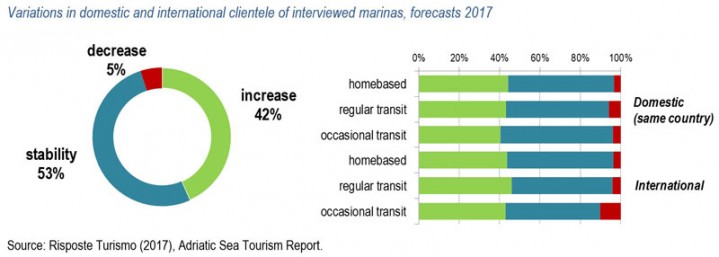
The session with Ardit Çollaku, the director of the Albanian National Tourism Agency, Alioša Ota, Director Italian Office of the Slovenian Tourist Board, and Željka Radak-Kukaviĉić, the director of National Tourism Organisation of Montenegro, was dedicated to the promotion of the Adriatic as a single tourism destination.
Francesco di Cesare – the President of Risposte Turismo – then presented the latest edition of the Adriatic Sea Tourism Report. This publication is a point of reference for researchers into maritime tourism in the Adriatic, with reference to the cruising, ferries and boating sectors. The report was drawn up by Risposte Turismo.
On cruises, the study concludes that, in 2017, the passengers using the cruise ports of the Adriatic shall total approx. 4.73 million (-6.51% on 2016) with 3,428 calls (-8.01%).
These data are the result of projections made by Risposte Turismo on the basis of the expectations of 18 and 26 Adriatic cruise ports, respectively. In 2016, these ports saw, in all, 94.7% of total passenger movements and 91.8% of the calls.
Considering the ports singly, 2017 should close with Venice firmly at the top of the ranking, with about 1.42 million cruise passengers handled (-11.4%) and 473 calls (-10.6%), followed by Dubrovnik, with its approx. 744,000 cruise passengers (-10.7%) and 537 calls (-16%) and Corfu, with its 635,000 cruise passengers (-15.2%) and 408 calls (-15.2%).
The Adriatic Sea Tourism Report also contains forecasts for 2017 on ferry, hydrofoil and catamaran passenger movements at 16 ports, representing 58% of the total number of passengers handled in 2016. Risposte Turismo believes this year shall close with a slight growth on 2016 (+1.5%) with a total of 17.9 million passengers. The forecasted number of calls, instead, remains stable (approx. 83,800, +0.3%).
Specifically in regard to the Italian ports examined, Pesaro should double its links to Croatia’s islands (approx. 64 calls). The port of Otranto should link for the first time with Corfu. Passenger movements are expected to be stable at Ancona and Brindisi (950,000 and 510,000 passengers, respectively).
In regard to the other surveyed ports of the area, we note positive forecast outcomes for Split (4.6 million passengers, +2%), Zadar (2.3 million, +1.9%), Rijeka (130,000, +1.3% on 2016), Šibenik (285,000, +3.2%) and Durres (847,000, +0.9%). Forecasts for passenger handling at the ports of Dubrovnik (550,000), Poreč (81,000), Rovinj (23,000) and Umag (9,500) shall instead be stable
With our focus remaining on the ferry/hydrofoil/catamaran macro sector, based on passenger movements analysed by country, the Adriatic Sea Tourism Report confirms Croatia’s leadership position in 2016, attained thanks to the approx. 8.9 million passengers handled (+3.1% on 2015, equal to 50.3% of total Adriatic area traffic) and approx. 48,000 calls (+10.6%, equal to 57.3% of total calls recorded).
Following, are Greece − with approx. 4.6 million passengers (+4.4% on 2015, equal to 26.1% of the total) and approx. 25,000 calls (+0.4%, equal to 30.2% of the total) − and Italy. In 2016 Italy recorded 2.8 million passengers handled (+1.5% on 2015, equal to 16% of the total), with 7,100 calls (-15%, equal to 8.5% of the total).
The Adriatic Sea Tourism Report provides a broad panorama of maritime tourism, without limiting itself to cruise and ferry traffic. Considerable space has therefore been given over to the boating sector. Following on from studies commencing in 2013 with the report’s first edition, mapping for 2017 indicates the presence of 331 accounting for about 78,000 berths in all.
Among the various Adriatic coastline countries, Italy was once more found to be the country with most marinas (188, equal to 56.8% of the total), and with most berths (more than 48,000, equal to 62.2% of the total). Following in the ranking are Croatia (122 marinas and slightly more than 20,000 berths) and the two countries, Slovenia and Montenegro, with their 8 marinas, and 3,470 and 3,450 berths respectively.
The report also provides turnover forecasts for 2017 for a sample of 65 marinas and 24 charter companies of the Adriatic. Both samples indicate that there is good reason to be hopeful for 2017. A stable or positive trend is hypothesized.
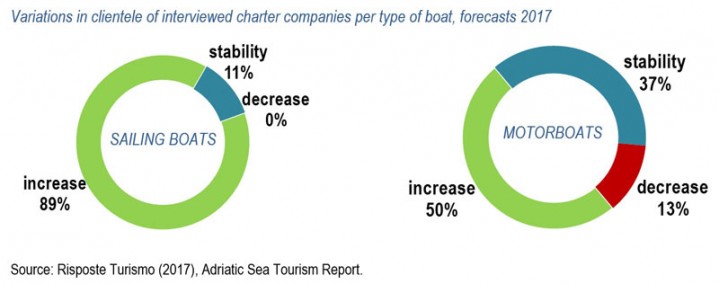
With our focus specifically on marinas, we note that 53% of the interviewees foresaw a stable value for clientele, while 42% expect higher numbers.
Turning to charter companies, we note that 89% of the sample predict an increase in the sailing clientele. This value falls to 50% in regard to increased motor boating clientele.
This year, the Adriatic Sea Tourism Report also focuses on investments made over the last three years and investments planned for the coming two years regarding the area’s marinas. Risposte Turismo’s analysis reveals that, for the three-year 2015-2017 period, investments shall total 50 million euros. During the coming two years, 8 openings of new structures are planned, 4 of which in Italy (in the Veneto region, Darsena Alberoni and Porto Caleri, in the Abruzzo region, Francavilla a Mare, and, in the Puglia region, Otranto), 3 in Croatia (in the Kvarner Gulf, Marina Muroskva and Port Podbaran Marina, and, in the Dubrovnik-Neretva region, Marina Gruz) and 1 in Montenegro (Portonovi Marina Hotel), accounting in all for more than 2,200 new berths.
“Overall, the signals generated by maritime tourism in the Adriatic,” stated Francesco di Cesare, President of Risposte Turismo, “provide contrasting indications, which must be interpreted as a stimulus for more, and better, work. Cruise operations can benefit today from the presence of a range of ports with quality infrastructures and services on both Adriatic coastlines. If the numbers for 2017 are not as we’d like them to be, this is to be seen as a result of the tragic terrorism events in the Mediterranean and of the still uncertain situation in Venice, leading companies to focus less on the Adriatic, with benefits for other areas of the world which have, over the years have grown most considerably (Asia is a key case in point)”.
“The presence of ferry companies has not fallen off”, di Cesare added, “and, indeed, they are considering a greater presence, exploiting current factors of systemic significance such as lower bunker costs, and other more structural factors such as the growing appeal of eastern Adriatic destinations, generating demand for old and new routes”.
Rounding off, di Cesare observed that “if we’re looking for a sea on which navigation can take place with few worries and with all conveniences at hand, on boats of varying sizes, the Adriatic Sea fits the bill perfectly. The marinas supply-side is already satisfactory. Considerable supply-side enhancement and enlargement investments are being made. Charter companies are aware that their clients want holidaymaking experiences that are as safe as they are pleasurable.
We are therefore confident that the figures shall rise for this kind of tourist traffic.”
The opening day at the Forum shall also feature a keynote address from Tom Fecke, Secretary General of CLIA Europe. To round off, a discussion shall be dedicated to planning Adriatic cruise routes, with Carla Salvadó, Director of cruise marketing for Global Ports Holding, Michel Nestour, Vice President of Global Ports & Destination Development Euromed Carnival Corp and Luigi Pastena, Worldwide Port Operations Director, MSC Crociere.










